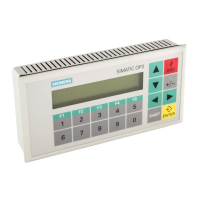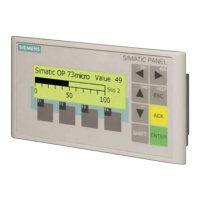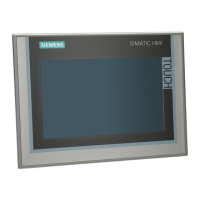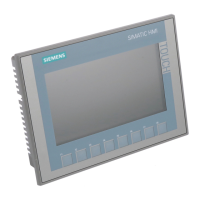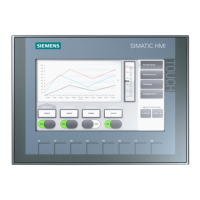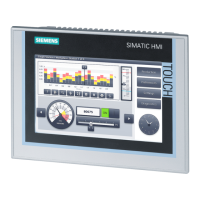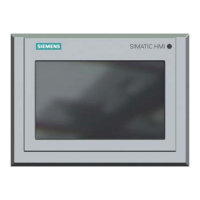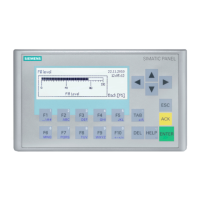7-2
Equipment
Manual OP7, OP17
Release 04/99
7.1 Message
types
Event
and alarm messages are configured. Event messages indicate a status
in the process, alarm messages indicate faults/errors. Event and alarm mes
-
sages are initiated by the PLC. Due to their critical nature, alarm messages
have to be acknowledged.
System messages are initiated by the OP
. They are not configured. They
provide information on operating states of the OP or maloperations and
breakdowns in communication.
7.1.1 Event and alarm messages
The
process states indicated by event messages and those indicated by alarm
messages are defined during configuration.
Messages that provide information on regular processes or states should be
categorized as event messages – for example
Temperature reached
or
Motor running.
Messages
on malfunctions referring to processes or states should be catego
-
rized as alarm messages – for example
Motor temperature too high
or
Valve will not open.
Due
to their critical nature, alarm messages have to be acknowledged. In do
-
ing so, the operator confirms that he has noticed the alarm message. Messa
-
ges can also be acknowledged by the PLC.
Apart from status messages, information on operation can also be configured
as event or alarm messages. If, for example, a machine operator wants to
start the bottling process but has for
gotten to open the water intake valve on
the mixer
, a message such as
Open water intake valve
can
prompt him to rectify the error
.
Event and alarm messages can be configured in such a way that any text
components can be made to stand out from the remaining message text by
means of flashing or a lar
ge font size. Alarm messages that have not been
acknowledged always flash.
Messages may contain static text and tag fields. The tag fields display current
actual values of the PLC in numerical or symbolic form. In addition, the date
and time can also be output in messages.
Event
and alarm
messages
System messages
Definition
Presentation
